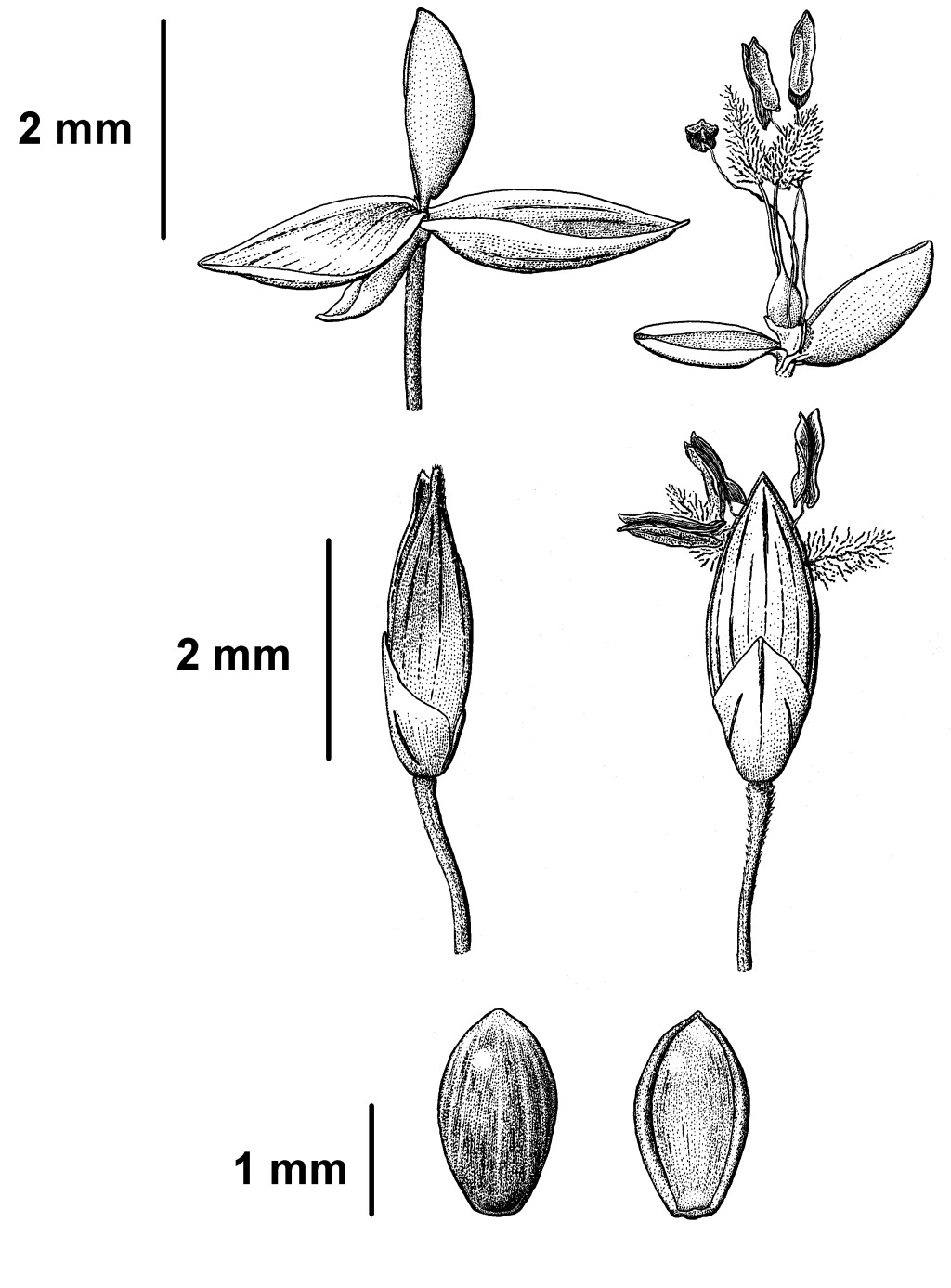Panicum capillare
L. WitchgrassTufted annual, culms erect, to 120 cm high; nodes hairy. Leaves with fine, spreading, tubercle-based hairs; blade flat, to 20 cm long and 2 cm wide, finely undulate at margin near base; ligule c. 1 mm long, ciliate at apex. Base of panicle remaining enclosed within upper sheath until (and sometimes beyond) maturity, 20–30 cm long, with branches finally widely spreading. Spikelets 2–3.3 mm long; lower glume 3–5-nerved, ovate, acute, c. 1 mm long; upper glume 7–9-nerved, ovate, acute, as long as the spikelet; rachilla not developed between glumes; lemma of lower floret equal to upper glume; palea of lower floret absent; fertile lemma 1.4–2 mm long, hard, shining, slightly shorter than upper glume, dorsally rounded, callus entirely basal, less than 0.5 mm wide; fertile palea subequal to lemma, dorsally rounded, with a slight protrusion near base.
LoM, MuM, Wim, VVP, VRiv, GipP, OtP, Gold, CVU, GGr, DunT, NIS, HSF. Also naturalized in WA, SA, NSW, Tas. Indigenous to North America, widely introduced elsewhere, mostly as a weed of grain crops.
The recognition of varietal taxa (Panicum capillare var. capillare and var. occidentale (syn var. brevifolium)) according to differences in spikelet size is generally no longer maintained.
Walsh, N.G. (1994). Poaceae. In: Walsh, N.G.; Entwisle, T.J., Flora of Victoria Vol. 2, Ferns and Allied Plants, Conifers and Monocotyledons, pp. 356–627. Inkata Press, Melbourne.
 Spinning
Spinning



